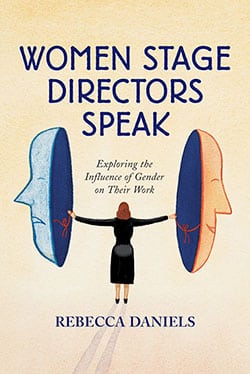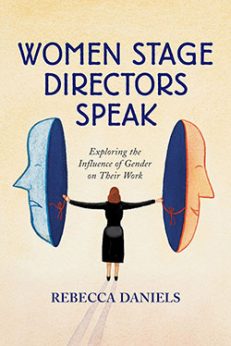Women Stage Directors Speak
Exploring the Influence of Gender on Their Work
Original price was: $29.95.$14.99Current price is: $14.99.
In stock
About the Book
Though stage directing has traditionally been a male-dominated profession, the number of women directors in the United States has grown significantly in recent years.
In this work, 35 contemporary women stage directors, with regional, national and international theater backgrounds, share their views on the creative process and the influences of gender on their artistic decision making. How does it feel to be defined as a woman director rather than simply a director? Does gender affect their authority? These questions and many others are explored in this study.
About the Author(s)
Bibliographic Details
Rebecca Daniels
Format: softcover (6 x 9)
Pages: 255
Bibliographic Info: photos, appendices, notes, bibliography, index
Copyright Date: 2000 [1996]
pISBN: 978-0-7864-0965-5
eISBN: 978-0-7864-8043-2
Imprint: McFarland
Table of Contents
ACKNOWLEDGMENTS V
PREFACE 1
The Study, Its Significance, and the Methods Used 1
PART ONE —INTRODUCTION 9
1: A Brief History of the Directorial Function, Theories, and Processes 9
Directing Theory 10
Qualities of a Good Director 11
Practical Elements of the Directing Process 12
Communication in Directing 12
A Director Plays Many Roles 13
2: The Women Interviewed and Their Perceptions of Gender Differences 14
A Brief Introduction to the Directors 14
Positions on Gender Differences 18
3: Gender Means Everything and Nothing 29
Resisting Definition as a Woman Director 29
Thinking About Gender When Working 33
Ignoring Gender 36
No Easy Answers 39
PART TWO—LEADERSHIP ISSUES FOR WOMEN DIRECTORS 45
4: Leadership Qualities in a Good Director 45
The Importance of Good Leadership 45
The Power of the Director 48
Reception of Women in Positions of Authority 56
5: Problems with Power 64
Resistance to Women in Authority 64
Issues of Behavior 76
Internal Resistance and Self-Doubt 82
PART THREE—COLLABORATION ISSUES FOR WOMEN DIRECTORS 91
6: Collaborative Qualities in a Good Director 91
The Importance of Successful Collaboration 91
Social Conditioning and Collaboration 94
A Different Approach to Collaboration 101
Possible Negatives in Collaboration 112
7: Women’s Ways of Collaborating 115
Sensitivity to Feelings and Emotions 115
Creating an Environment of Trust and Intimacy 119
Nurturance 124
Use of Instinct and Intuition 127
Finding a Balance 130
PART FOUR—PRACTICAL ELEMENTS OF THE DIRECTING PROCESS 137
8: Issues in Script Selection and Interpretation 137
Factors in the Script Selection Process 137
Themes Related to Women and Gender 139
An Awareness of Women’s Issues 142
Other Influences on Script Selection 148
Overcoming Perceived Limitations 152
9: Working with Actors 157
Casting Issues 157
Character Development Issues 163
10: Technical and Spatial Issues Influenced by Gender 174
Technical Considerations 174
Use of Space 177
11: Economic and Career Considerations 185
Family Demands 185
Career Development 188
CONCLUSION 197
APPENDIX A: SIGNIFICANT INFLUENCE ON THE DIRECTORS’ ARTISTIC IDENTITY AND PERSONAL DEVELOPMENT 205
APPENDIX B: THEATRICAL BIOGRAPHIES OF THE DIRECTORS 216
NOTES 231
BIBLIOGRAPHY 237
INDEX 241
Book Reviews & Awards
“extensive and scholarly…recommended as an excellent and valuable addition to theater and women’s studies collections”—Library Journal; “the directors are well chosen for their ability to examine their experiences in the theater. Recommended for all academic and professional libraries”—Choice; “quite thorough…fascinating and informative”—Theatre Journal.






